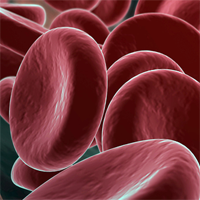Red cell distribution width is a potential predictor of early relapse in polymyalgia rheumatica

Submitted: 11 January 2021
Accepted: 15 March 2021
Published: 3 August 2021
Accepted: 15 March 2021
Abstract Views: 2673
PDF: 507
Publisher's note
All claims expressed in this article are solely those of the authors and do not necessarily represent those of their affiliated organizations, or those of the publisher, the editors and the reviewers. Any product that may be evaluated in this article or claim that may be made by its manufacturer is not guaranteed or endorsed by the publisher.
All claims expressed in this article are solely those of the authors and do not necessarily represent those of their affiliated organizations, or those of the publisher, the editors and the reviewers. Any product that may be evaluated in this article or claim that may be made by its manufacturer is not guaranteed or endorsed by the publisher.
Similar Articles
- M. Manara, G. Carrara, C. A. Scirè, M. A. Cimmino, M. Govoni, C. Montecucco, M. Matucci-Cerinic, G. Minisola, the KING study group, Lifestyle and dietary habits of patients with gout followed in rheumatology settings , Reumatismo: Vol. 67 No. 4 (2015)
- Ş. Kobak, A. Berdeli, Fas/FasL promoter gene polymorphism in patients with rheumatoid arthritis , Reumatismo: Vol. 64 No. 6 (2012)
- S. Muller, S. Hider, T. Helliwell, R. Partington, C. Mallen, The real evidence for polymyalgia rheumatic as a paraneoplastic syndrome , Reumatismo: Vol. 70 No. 2 (2018)
- M. Bellan, P.P. Sainaghi, M. Pirisi, The real evidence for polymyalgia rheumatic as a paraneoplastic syndrome , Reumatismo: Vol. 70 No. 2 (2018)
- C. Giacomelli, L. Bazzichi, L. Giusti, F. Ciregia, C. Baldini, Y. Da Valle, F. De Feo, F. Sernissi, A. Rossi, S. Bombardieri, A. Lucacchini, MALDI-TOF and SELDI-TOF analysis: “tandem” techniques to identify potential biomarker in fibromyalgia , Reumatismo: Vol. 63 No. 3 (2011)
- N. Ughi, G.D. Sebastiani, R. Gerli, C. Salvarani, S. Parisi, A. Ariani, I. Prevete, M. Manara, F. Rumi, C.A. Sciré, A. Bortoluzzi, The Italian Society of Rheumatology clinical practice guidelines for the management of polymyalgia rheumatica , Reumatismo: Vol. 72 No. 1 (2020)
- M. Rossini, O. Viapiana, M. Vitiello, N. Malavolta, G. La Montagna, S. Maddali Bongi, O. Di Munno, R. Nuti, C.U. Manzini, C. Ferri, L. Bogliolo, A. Mathieu, F. Cantatore, A. Del Puente, M. Muratore, W. Grassi, B. Frediani, G. Saviola, P. Delvino, L. Mirone, G. Ferraccioli, G. Tripi, I. Piazza, D. Gatti, Prevalence and incidence of osteoporotic fractures in patients on long-term glucocorticoid treatment for rheumatic diseases: the Glucocorticoid Induced OsTeoporosis TOol (GIOTTO) study , Reumatismo: Vol. 69 No. 1 (2017)
- A. Zaccaria, G. Latinakis, M. Oliveri, T. Maio, G. Frisone, F. Versace, The support of the ultrasonography of the shoulder in the diagnosis of polymyalgia rheumatica with normal erythrocyte sedimentation rate , Reumatismo: Vol. 61 No. 4 (2009)
- N. Busso, H.-K. Ea, The mechanisms of inflammation in gout and pseudogout (CPP-induced arthritis) , Reumatismo: Vol. 63 No. 4 (2011): Special issue • Microcrystalline Arthritis
- A. Alunno, V. Caneparo, F. Carubbi, O. Bistoni, S. Caterbi, M. Gariglio, E. Bartoloni, S. Landolfo, R. Gerli, Interferon gamma-inducible protein 16 (IFI16) and anti-IFI16 antibodies in primary Sjögren’s syndrome: findings in serum and minor salivary glands , Reumatismo: Vol. 67 No. 3 (2015)
<< < 1 2 3 4 5 6 7 8 9 10 > >>
You may also start an advanced similarity search for this article.

 https://doi.org/10.4081/reumatismo.2021.1395
https://doi.org/10.4081/reumatismo.2021.1395




